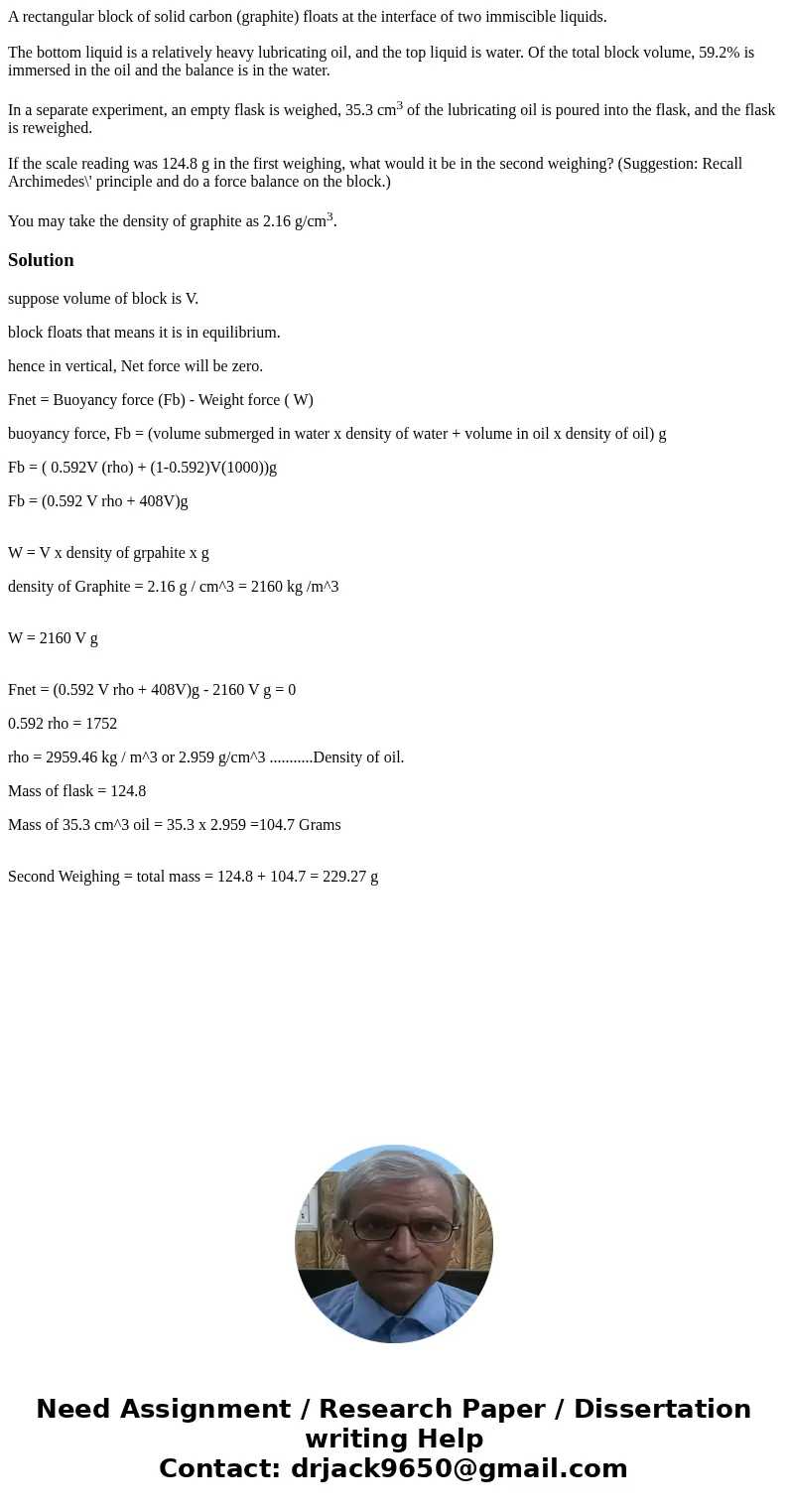A rectangular block of solid carbon graphite floats at the i
A rectangular block of solid carbon (graphite) floats at the interface of two immiscible liquids.
The bottom liquid is a relatively heavy lubricating oil, and the top liquid is water. Of the total block volume, 59.2% is immersed in the oil and the balance is in the water.
In a separate experiment, an empty flask is weighed, 35.3 cm3 of the lubricating oil is poured into the flask, and the flask is reweighed.
If the scale reading was 124.8 g in the first weighing, what would it be in the second weighing? (Suggestion: Recall Archimedes\' principle and do a force balance on the block.)
You may take the density of graphite as 2.16 g/cm3.
Solution
suppose volume of block is V.
block floats that means it is in equilibrium.
hence in vertical, Net force will be zero.
Fnet = Buoyancy force (Fb) - Weight force ( W)
buoyancy force, Fb = (volume submerged in water x density of water + volume in oil x density of oil) g
Fb = ( 0.592V (rho) + (1-0.592)V(1000))g
Fb = (0.592 V rho + 408V)g
W = V x density of grpahite x g
density of Graphite = 2.16 g / cm^3 = 2160 kg /m^3
W = 2160 V g
Fnet = (0.592 V rho + 408V)g - 2160 V g = 0
0.592 rho = 1752
rho = 2959.46 kg / m^3 or 2.959 g/cm^3 ...........Density of oil.
Mass of flask = 124.8
Mass of 35.3 cm^3 oil = 35.3 x 2.959 =104.7 Grams
Second Weighing = total mass = 124.8 + 104.7 = 229.27 g

 Homework Sourse
Homework Sourse